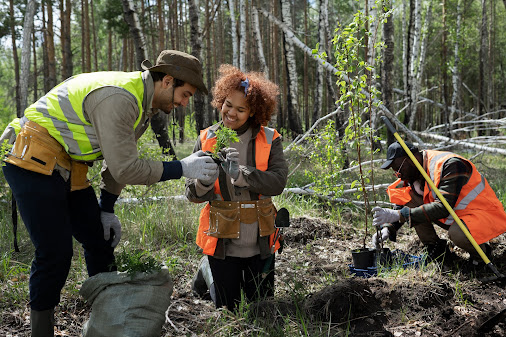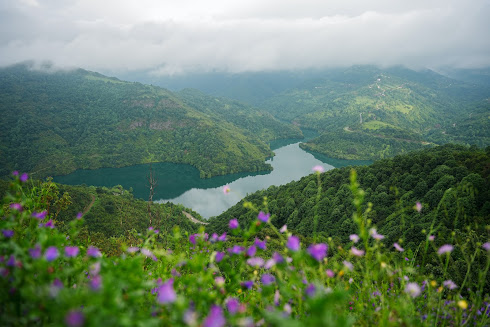WHAT IS RIVERSIDE RESTORATION AND WHY IS IT IMPORTANT
Riversides play a vital role in maintaining our ecosystems' ecological balance and overall well-being. However, due to urbanization, industrialization, and various human activities, riversides often face degradation and loss of their natural habitats.
Riverside restoration is a critical process that aims to revive and rehabilitate these valuable ecosystems. This article will explore what cityrestore riverside restoration entails and why it is important.
The restoration plan may include activities such as:
Habitat Restoration
One of the primary goals of riverside restoration is to enhance and recreate natural habitats that support a diverse range of plant and animal species.
This involves replanting native vegetation, reintroducing species that were once present, and creating diverse ecosystems that can support a wide array of wildlife.
Restoring natural habitats helps preserve biodiversity, promote ecological balance, and provide critical resources for aquatic and terrestrial species.
Erosion Control
Many riversides suffer from erosion, which can lead to the loss of soil, sedimentation in water bodies, and destabilization of the riverbank. Riverside restoration often includes erosion control measures such as installing erosion control structures.
It also implements techniques to manage water flow and prevent further erosion. These measures help protect the integrity of the riverside ecosystem and prevent the loss of valuable land.
Riparian Buffer Zones
Riparian buffer zones are areas of vegetation along the banks of rivers that act as a protective barrier between the water and the surrounding land. These buffer zones help filter pollutants, control runoff, and provide shade, which helps regulate water temperature and supports aquatic life.
Riverside restoration aims to establish and enhance riparian buffer zones to improve water quality, maintain ecological balance, and provide additional habitat for wildlife.
Wetland Restoration
Wetlands are valuable ecosystems often located adjacent to rivers and play a crucial role in flood control, water purification, and biodiversity conservation.
Riverside restoration may include restoring and creating wetlands to reestablish these vital habitats. This involves restoring hydrological patterns, planting wetland vegetation, and ensuring suitable conditions for wetland-dependent species to thrive.
Community Engagement
Riverside restoration projects often involve community engagement and collaboration with local stakeholders. Engaging local communities in the restoration process fosters a sense of ownership, raises awareness about the importance of riverside ecosystems, and promotes sustainable land and water management practices.
Community involvement can range from volunteering in restoration activities to participating in educational programs and monitoring the health of restored riversides.
Look at its Benefits!
1: Understanding Riverside Restoration
Riverside restoration refers to improving and enhancing the health and vitality of riverbanks, floodplains, wetlands, and adjacent habitats.
It involves a range of activities, including habitat restoration, erosion control, water quality improvement, vegetation management, and the establishment of sustainable riverbank infrastructure.
Restoration services are often carried out in collaboration with environmental organizations, government agencies, and local communities to achieve the best possible outcomes.
2: Biodiversity Conservation
One of the primary reasons for prioritizing riverside restoration is its significant impact on biodiversity conservation. Healthy riversides provide many habitats, including wetlands, forests, and grasslands, which support diverse plant and animal species.
Restoring these ecosystems creates opportunities for native flora and fauna to thrive, protecting endangered species and maintaining overall ecological balance. Riverside restoration initiatives focus on preserving and enhancing biodiversity, contributing to the long-term sustainability of our ecosystems.
3: Water Quality Improvement
Riversides act as natural filters, crucial in maintaining water quality. They help regulate water flow, filter sediments and pollutants, and facilitate groundwater recharge. However, human activities often result in the contamination of rivers, leading to adverse impacts on both aquatic life and human health.
We can implement measures to improve water quality through restoration efforts, such as establishing buffer zones, creating wetlands, and reducing nonpoint source pollution. Restored riversides act as natural purification systems, ensuring the availability of clean water for both ecological and human needs.
4: Flood Mitigation and Erosion Control
Riverside restoration plays a vital role in flood mitigation and erosion control. Healthy riverbanks and floodplains can absorb excess water during heavy rainfall, reducing the risk of flooding in surrounding areas.
By restoring natural vegetation, stabilizing riverbanks, and implementing erosion control techniques, we can minimize soil erosion, prevent sedimentation in water bodies, and mitigate the impacts of floods.
Riverside restoration thus protects human settlements, infrastructure, and agricultural lands from the destructive forces of flooding.
5: Climate Change Resilience
In the face of climate change, riverside restoration is of paramount importance. Healthy riversides act as carbon sinks, sequestering and storing carbon dioxide, a significant greenhouse gas contributing to global warming.
Moreover, restored ecosystems enhance the resilience of landscapes to climate change impacts, such as extreme weather events and rising temperatures.
Through reforestation, the establishment of riparian vegetation, and the restoration of wetlands. We can create climate-resilient ecosystems with multiple benefits, including carbon sequestration, temperature regulation, and habitat preservation.
6: Recreational and Socio-economic
Restored riversides offer numerous recreational and socio-economic benefits to local communities. A revitalized river ecosystem provides opportunities for activities like fishing, boating, birdwatching, and nature tourism, which contribute to the local economy.
Conclusion
Additionally, riversides offer aesthetic value, creating green spaces for leisure and relaxation. Riverside restoration projects often involve community engagement, empowering residents to participate in conserving and managing their natural resources actively.




.jpeg)

Comments
Post a Comment